So what is this brace thing all about then?Simply put, it ties the two turrets together with rigid bars.
Why do I need that then?Well, you don't really. It's just one of those 'nice to haves' to fine tune the chassis feel and responsiveness.
If we do some basic analysis, the best analogy I can come up with is a cardboard box. An empty box is structurally very floppy. Put some bracing in it, such as wine bottle dividers for example, and then it immediately becomes significantly more rigid. The same theory applies to cars. This is why saloons are so much more rigid than hatchbacks, because they have a big piece of sheet metal welded between the turrets.
OK, that sounds interesting, but why does it matter?When you load a car up driving hard into a corner, hatchbacks have a tendency to twist because the rear of the car has no bracing. The front turrets are braced by the firewall (plus other crash related strengthening), so a front brace is way less significant. With the bulk of the weight at the front, along with a more rigid front structure, plus the length of the car....it's one heck of a long length of metal to try and remain stiff and planted in the bends.
This manifests itself as the rear end feeling a bit lazy, and the rear axle is just along for the ride instead of actively contributing to propping the car up in the corners. One way of curing this is to fit a fatter rear roll bar, or stiffer rear springs, which then gives the car a more oversteery bias. The car then feels more neutral in the corners, like both axles are flatter and more in-tune with each other. Turn-in also improves. But the fatter arb still has a soggy rear end to deal with - think house foundations. The more solid, the better.
Hmmmmm, you're losing me now, yawn, get to the point.OK, so when a rear wheel hits a bump, or if one side loads up.....there is a vertical force applied to the strut tower. Newton's 3rd law - every force has an equal and opposite reactive force. Guess what the opposing force is? The strut structure trying to move upwards in harmony with the damper/spring, which tries to bend the bodyshell accordingly. The brace bars send that opposing force over to it's partner in crime on the other side of the car, so the forces balance each other out.
Ah OK, gotcha, so these little bars really work huh?Yep! More so on my old MK4 R32. I've seen stronger blancmanges than that bodyshell. The effect of a rear brace was so profound on that platform, it felt like I'd fitted a bigger rear ARB.
Yeah, whatever, what about the MK5, does it have the same affect?Absolutely! The MK5 was blessed with a 200% stiffer shell than the MK4, yep, 200%. Marque to marque updates are usually in the order 30% stiffer, but VW really went to town on the MK5. But none the less, the bracing does still have a noticeable effect. MK5s are 12 years old now after all.
Does this man ever shut up? Get to the unboxing, pics and test drive already!!The Americans know how to package a product. I chucked the box, but it was super tough and within it were these nicely packaged tasty parts....
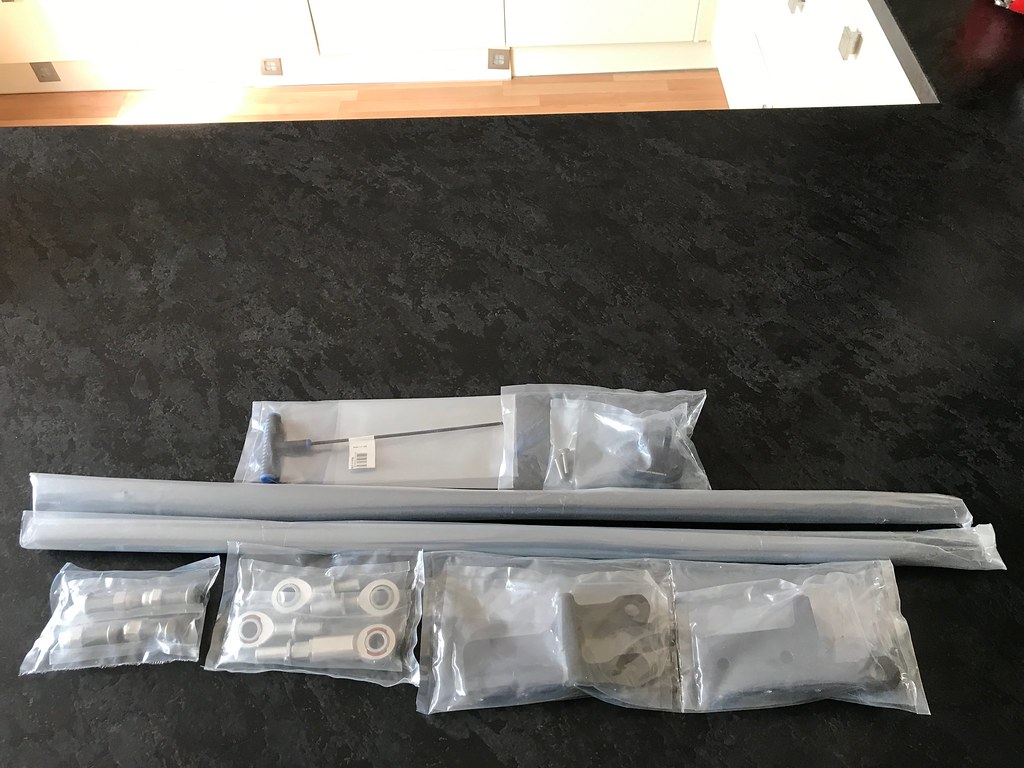
Unbagged, the beauty of construction unfolds.... it really is nicely made stuff!
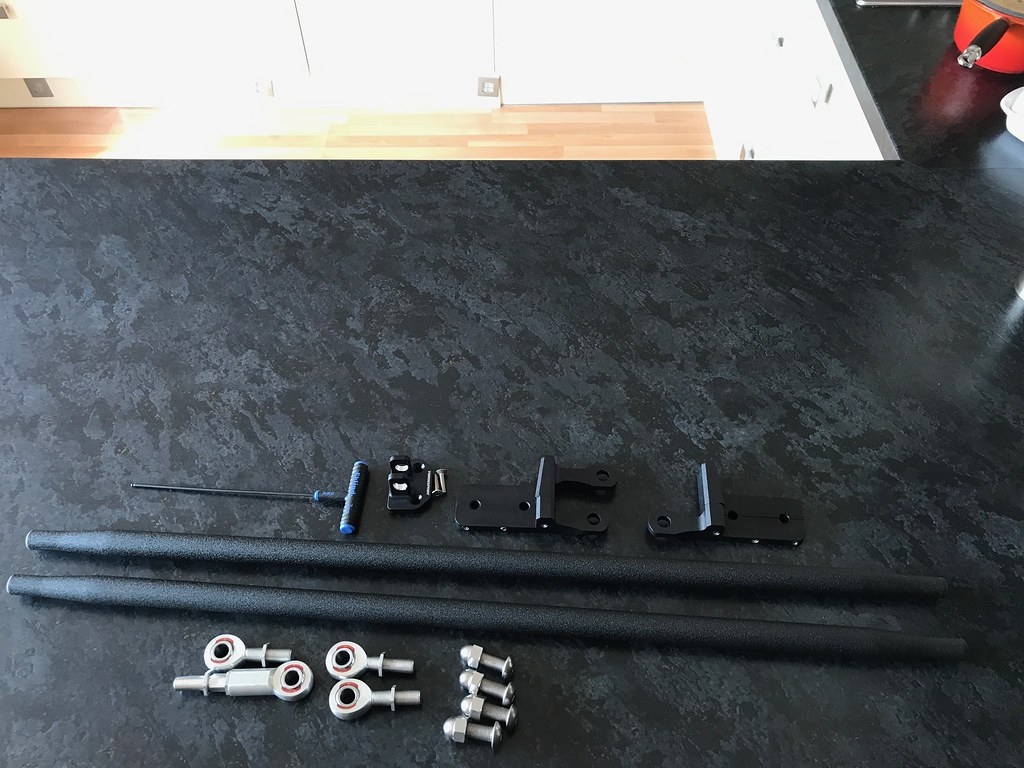
And here it is fitted into the car...
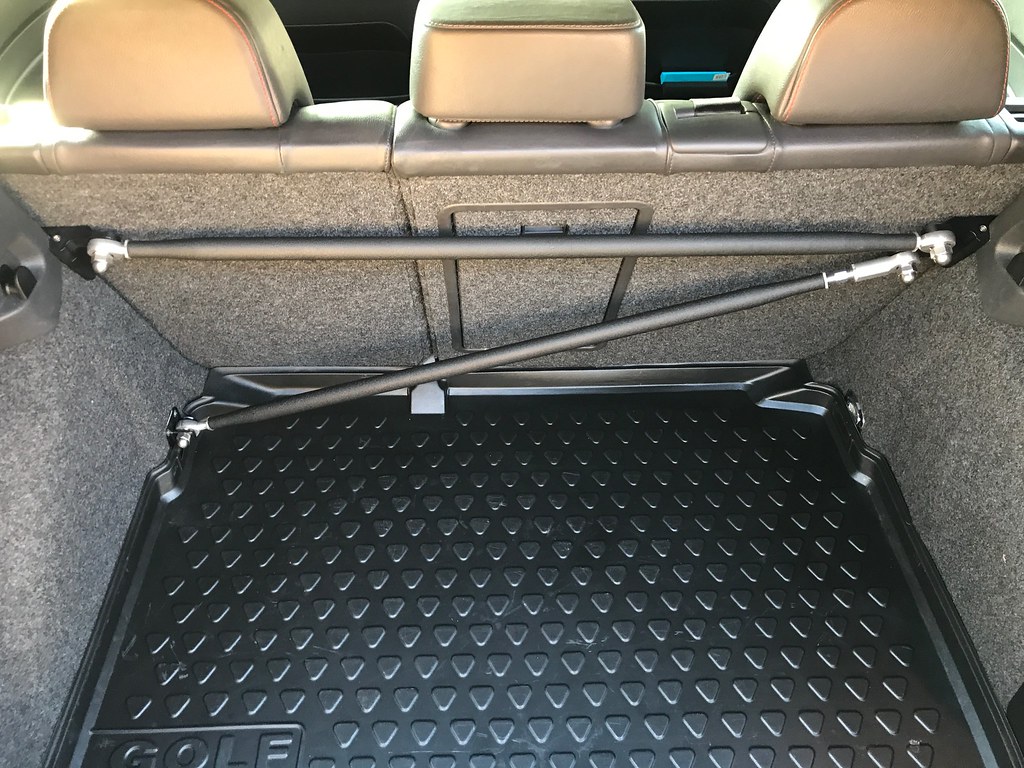 Wow, looks sexy, was it hard to fit?
Wow, looks sexy, was it hard to fit?Not at all. Here is TyrolSport's instruction video, so have a gander and see for yourself -
No drilling, say what?? There must be a catch, surely?Well, yeah there is. Due to the brace being a generic product for both MK5 & MK6, some trimming of the plastics may be required. Mine needed a bit of trimming, but bothered I am not because A) they're cheap to replace if selling the car on, and B) it's the back of the car where you put shopping and schitt, so who cares right? My main concern was drilling. In 2017, modifications of this type should not require drilling if it's a well thought out product....and drilling is irreversible, replacing plastic trims is no biggy.
The trimming is so subtle that most people would be hard pushed to notice it anyway. I bet you're thinking "What's he actually trimmed?" Exactly

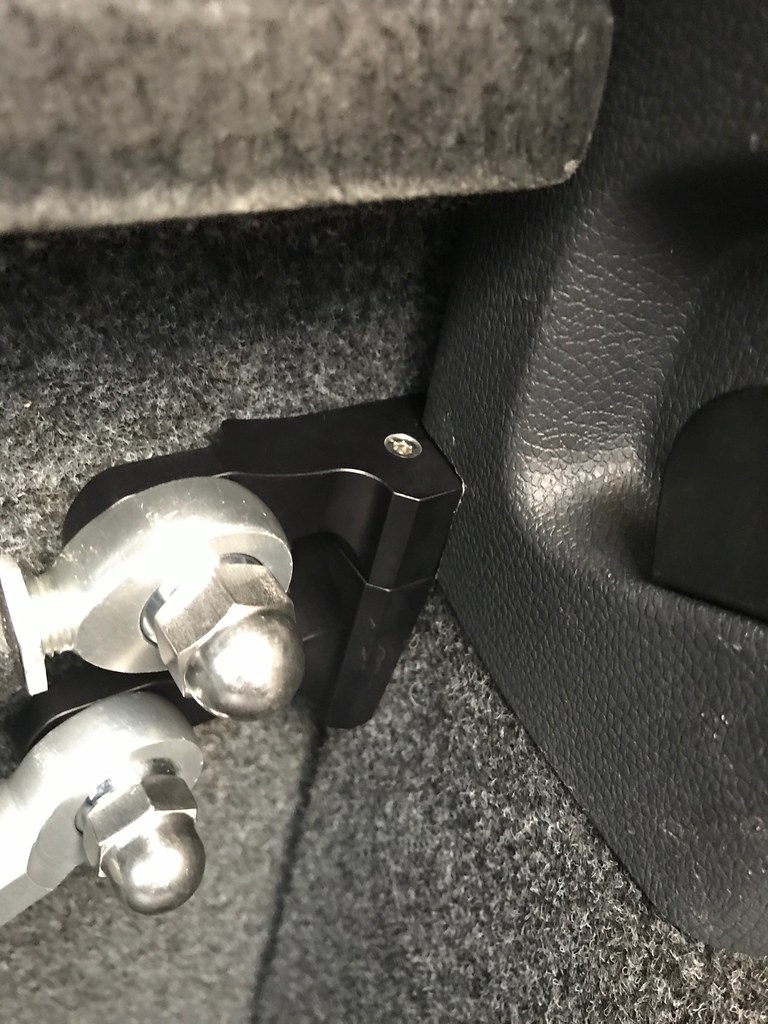
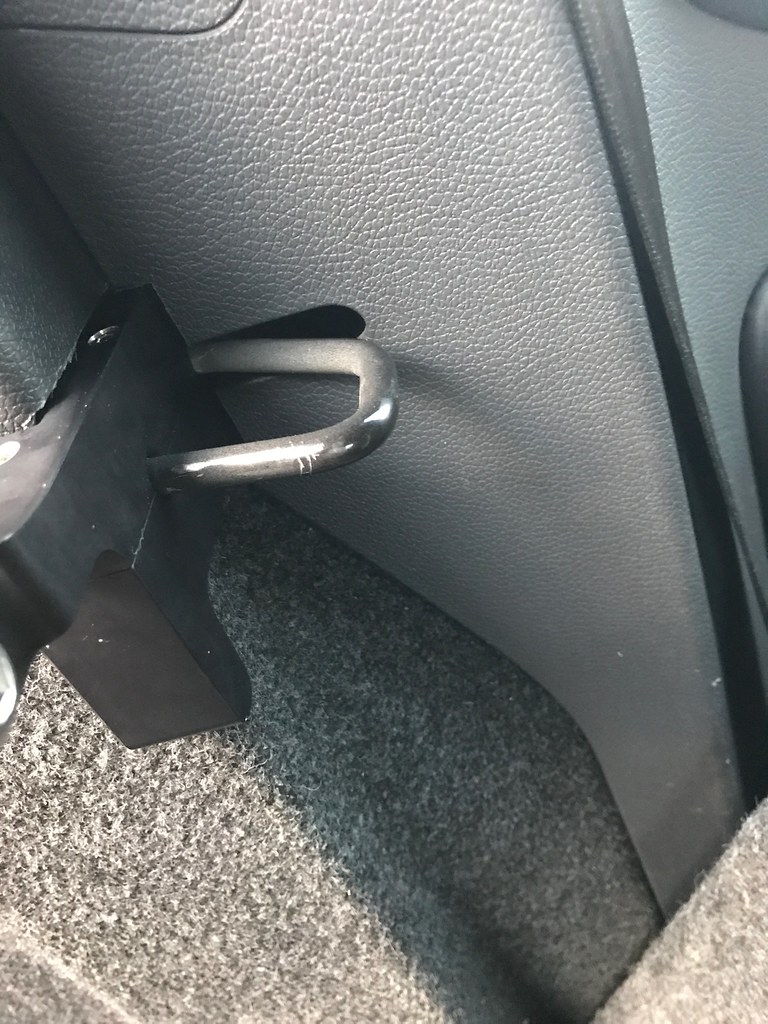 Stop it already, I can feel my wallet twitching. How much?
Stop it already, I can feel my wallet twitching. How much?Hmmmm....well....that is the biggest drawback, coz it ain't cheap! I paid $489 for the stage 2 wrinkle coated aluminium bar kit + $65 USPS shipping. £428. Customs and handling fees at the UK end were £32, bringing it to a grand total of £460. Before you shout "Are you fricking nuts???" at the screen, firstly, the quality has to be seen to be believed and secondly, no one in the UK had one, or even seemed remotely interested in getting one for me....and thirdly, one UK supplier used to list it at £500 + shipping, but no longer list it. So I saved a bit by importing it myself, and got it just as quick as a UK supplier could.
For those still with me, they also do a carbon fibre option which is mega rigid, but mega money. The aluminium bars are decent enough for a daily imo
 Yeah I'm feeling it, but not feeling the price, is it worth it?
Yeah I'm feeling it, but not feeling the price, is it worth it? For the sheer bling factor, absolutely imo. Who doesn't like motorsport inspired posh looking bars in their boot?

But seriously, the brace kit does make a tangible difference on the road. On the first test drive, I immediately noticed less creaking from the door seals when driving down drop kerbs, less squeaking and grumbling from the back over bumps and the first corner I hit....wow....it felt like I'd gone up a mm in rear ARB size as I mentioned earlier.
So yeah, this is definitely form AND function. Very expensive granted, but for those who want an easily reversible hatch brace with no drilling, I can't think of a better product currently available. Obviously nothing will beat a welded in cage, but this a nice, neat and subtle solution for anyone wanting to stiffen up their shell a bit
